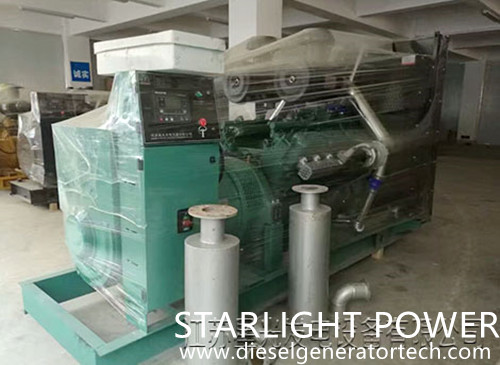The emissions of diesel generators are mainly produced by diesel engines, and their emissions include CO2 (carbon dioxide), CO (carbon monoxide), PM (particulate matter), NOX (nitrogen oxides), HC (hydrocarbons), etc. Jiangsu Starlight Electricity Equipments Co.,Ltd. will lead you to understand these emissions and their causes.
(1) Types of emissions from diesel generators.
1. C02 (carbon dioxide) is produced by burning substances containing carbon. Since the 21st century, due to the massive consumption of fossil fuels such as petroleum and the deforestation of tropical rain forests, the atmospheric CO2 content has increased dramatically. C02 causes the earth to warm, which is called the greenhouse effect. Compared with gasoline engines, diesel generators consume less fuel and emit relatively less CO2 gasoline.
2. CO (carbon monoxide) emission limit objects. Co is produced when the fuel is not completely burned under low oxygen conditions. 90% of carbon dioxide emissions are believed to come from automobiles, and carbon dioxide emissions are the first time that all the emitted gases have been identified as restricted objects. After this gas is inhaled by humans, hemolysis will occur and cause poisoning. However, compared with gasoline engines, diesel generators burn more fully, so the amount of CO produced is very small.
3. PM (particulate matter) and exhaust gas emission limit objects. PM is the general term for particulate matter emitted from diesel generators, mainly soot. It is composed of the remaining fuel and lubricant after combustion, and the composition of the sulfur in the light oil fuel after combustion.
4. NOX (nitrogen oxide), exhaust gas emission limit object. NOX is a general term for a variety of compounds such as NO, N02, N20, N202, etc. It is formed by the combination of nitrogen molecules and oxygen molecules under high temperature conditions. Not only cars, cigarettes, stoves, etc. It can also produce NOx. The higher combustion temperature is more likely to produce NOx, and the combustion temperature should be appropriately reduced when designing diesel generators.
5. HC (hydrocarbons), exhaust gas emission restrictions objects. HC is the general term for compound substances composed of hydrogen and carbon. It is also the cause of the formation of photochemical smog, which can affect the respiratory system according to different types.

(2) The cause of emissions.
1. C02. C02 is a petrochemical fuel combustion. Emissions increase with the proportion of burned fuel consumption. Diesel generators have fewer emissions, while gasoline engines have more emissions. Used in automobile internal combustion engines, diesel generators have high thermal efficiency and low fuel consumption. However, compared with diesel generators, gasoline engines have poor thermal efficiency, so fuel consumption is high, so CO2 emissions are higher.
2. NOx/PM (particulate matter/soot). NOx is produced in a high-temperature complete combustion state. Different from the three substances mentioned above, the NOx emissions in diesel generators are greater, while the emissions from gasoline engines are smaller. The reason for this is that diesel generators do not have ignition devices, which are usually divided into four stages, namely, ignition delay period, pre-mixed combustion period, rapid combustion period and post-combustion period. In the early mixed combustion process, the cylinder temperature rises rapidly due to the high heat generated by the burner. At this time, NOx is produced. The higher the temperature, the faster the reaction, which is the main reason for the production of NOx.
PM (soot) is produced under low-temperature conditions where incomplete combustion occurs. Like NOx, diesel generators emit more emissions than gasoline engines. This is also due to the nature of combustion. The internal combustion engine injects fuel into the cylinder, mixing fuel and air, and the mixing state is generally uneven, and during the rapid combustion and post-combustion periods, the temperature and pressure in the cylinder decrease, resulting in incomplete fuel combustion. At this time, PM (soot) is produced. On the other hand, gasoline engines generally ignite with the gas mixture, so incomplete combustion has a short combustion process and low emissions.
3. Carbon monoxide/HC. Co is produced when oxygen is incompletely combusted. Diesel generators emit very little, while gasoline engines emit more. This is because the diesel generator burns in a relatively complete state of fuel and air. HC, like co, is produced due to insufficient air required to burn the fuel. Compared with diesel engines, gasoline engines emit more emissions.
Jiangsu Starlight Electricity Equipments Co.,Ltd. was founded in 1974, as a wholly-owned subsidiary of Jiangsu Starlight Power Group, it is one of the earliest manufacturers of generator sets in China. Starlight Power has 64 sales services, long-term technical advice for users, free debugging, free maintenance, free training services. For more details, please contact us with [email protected]
Copyright © Guangxi Dingbo Generator Set Manufacturing Co., Ltd. All Rights Reserved | Sitemap
Update cookies preferences